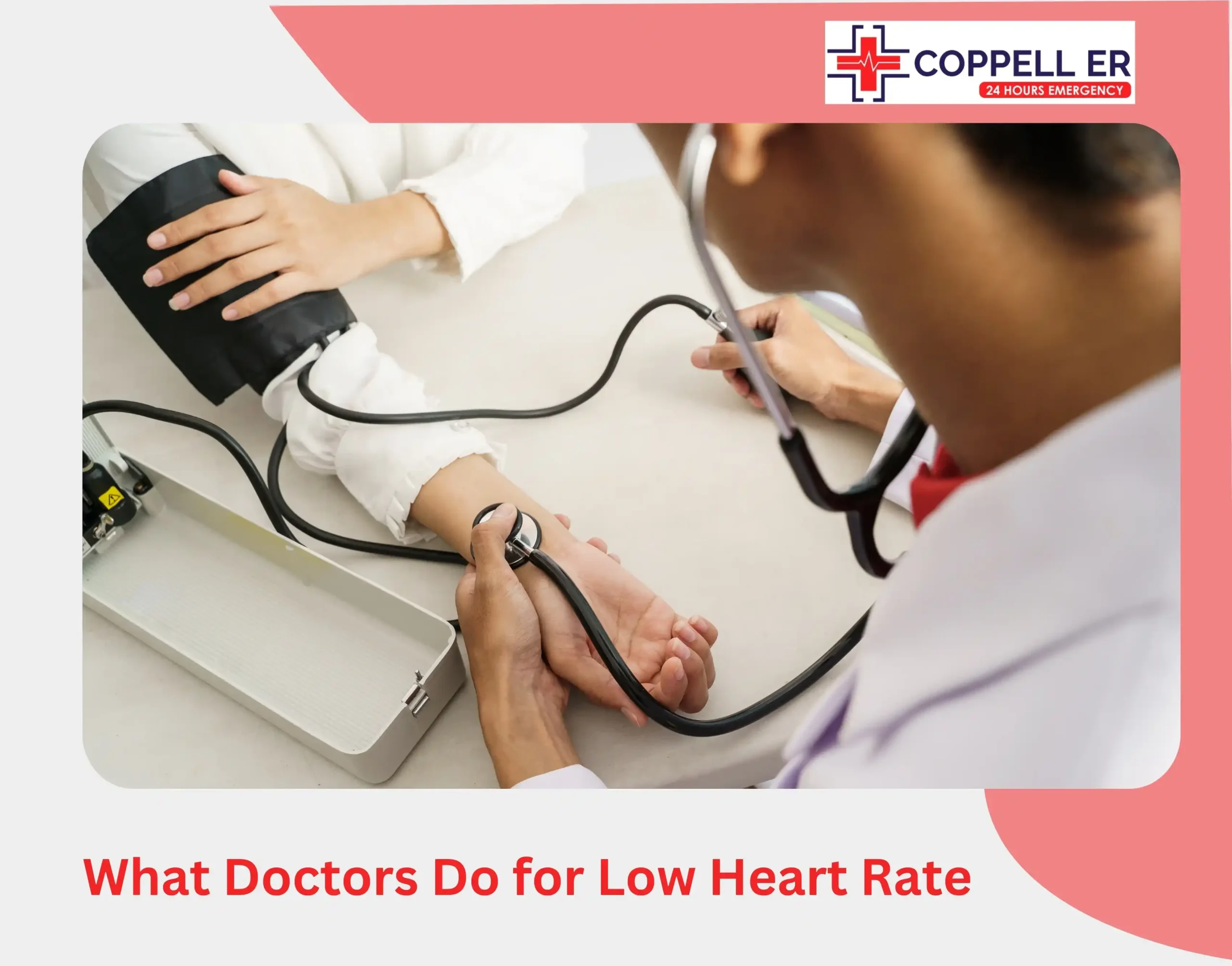Do you know a slow heartbeat isn’t always a sign of fitness? Sometimes, it’s the first warning of sudden cardiac arrest. Many athletes and physically fit people naturally have a resting heart rate below 60 beats per minute (bpm), and their hearts work perfectly well.
But when a low heart rate comes with symptoms like dizziness, fatigue, fainting, or chest pain, it can signal an underlying heart problem. It may mean the heart is struggling to pump enough blood to keep your brain and organs alive.
In severe cases, untreated low heart rate can lead to heart failure, sudden cardiac arrest, or even death. Let’s see when a slow heart rate is harmless and when it becomes a red flag that calls for immediate medical help.
What Is a Low Heart Rate?

A low heart rate, medically called bradycardia, means the heart is beating slower than normal. In most adults, anything below 60 beats per minute (bpm) is considered slow. However, your heart rate changes naturally throughout the day. It slows down when you sleep, rises when you exercise, and adjusts when you’re stressed or relaxed.
What makes bradycardia concerning isn’t just the number, but whether the heart is keeping up with the body’s needs. A very slow heartbeat can reduce the amount of oxygen-rich blood reaching vital organs, especially the brain. That’s why you may feel light-headed, unusually tired, or faint.
It’s also worth noting that not all cases of low heart rate look the same:
- Some people experience occasional dips, especially at night, with no issues.
- Others may have a consistently low rate due to problems in the heart’s electrical system, which controls each beat.
- In older adults, bradycardia can be a sign of age-related wear and tear in the heart’s conduction pathways.
Doctors often distinguish between “physiological bradycardia” (a healthy adaptation, like in athletes or during deep rest) and “pathological bradycardia” (a sign of disease or damage).
8 Symptoms of Low Heart Rate You Shouldn’t Ignore
Low pulse rate often goes unnoticed until it begins to affect daily life. Here are some key symptoms to look for.
- Unexplained fainting (syncope): Sudden blackouts caused by the brain not receiving enough blood flow.
- Persistent dizziness or light-headedness: A common result of reduced circulation to the brain.
- Shortness of breath, even at rest: When the heart can’t pump efficiently, oxygen delivery drops.
- Chest pain or pressure: Can signal that the heart muscle itself is not getting enough oxygen.
- Confusion or memory lapses: Low blood supply to the brain can impair thinking and focus.
- Extreme fatigue or weakness: Even light activities may feel draining.
- Exercise intolerance: Struggling to keep up with normal workouts or daily tasks because the heart rate doesn’t increase as it should.
- Palpitations or skipped beats: Some people feel their heart “fluttering” or notice irregular rhythms alongside slow beats.
How Low Is Too Low?
A resting heart rate naturally varies from person to person, but certain thresholds indicate when a slow pulse may move from normal to concerning. What matters most is not just the number, but whether the heart can adjust to the body’s demands.
Thresholds by Numbers
- Below 60 bpm: Considered bradycardia in adults, but may be normal for athletes or during sleep.
- Around 50 bpm: May be acceptable in healthy individuals, yet could cause fatigue or dizziness in others.
- Below 40 bpm: Often too low for the body to maintain adequate blood flow and oxygen, and usually requires urgent medical evaluation.
When to Worry?
A slow heart rate is most dangerous when it cannot increase appropriately with activity or postural changes. If the pulse stays low during exercise, climbing stairs, or even standing up, the body is deprived of oxygen-rich blood. This failure to adapt is a strong indicator of the need for emergency medical assistance.
Causes and Risk Factors
Not all cases of low heart rate are dangerous, but some underlying issues can turn it into a health risk.
- Heart conduction problems: Damage to the heart’s electrical pathways (sick sinus syndrome, heart block).
- Aging: Natural wear and tear in the heart muscle and conduction system. Studies suggest that age-related changes in the heart’s electrical system are the leading cause of bradycardia
- Medications: Beta-blockers, calcium channel blockers, or certain antiarrhythmic drugs can slow the pulse.
- Thyroid disorders: Low thyroid activity (hypothyroidism) reduces heart rate.
- Electrolyte imbalances: Low potassium, calcium, or magnesium can disrupt normal rhythm.
- Sleep apnea: Repeated pauses in breathing during sleep stress the heart and slow its rhythm.
When to Get Medical Help

A slow heartbeat isn’t always dangerous, but act fast if warning signs appear.
- Fainting or frequent dizziness
- Chest pain or pressure
- Shortness of breath at rest
- Extreme fatigue or confusion
- Bluish lips or fingertips
Routine vs Emergency
- Call your doctor: If your heart rate stays below 60 bpm with mild tiredness but no severe symptoms.
- Go to the ER: If the heart rate drops below 40 bpm or you faint, struggle to breathe, or have chest pain.
At the ER of Coppell, we specialize in decoding these alarming symptoms. Call us at (469)763-3136.
What Doctors Do for Low Heart Rate

Expect an ECG, blood tests, and pulse monitoring. Treatment may involve medication changes or a pacemaker if the heart can’t regulate itself.
Conclusion
A low heart rate isn’t always dangerous. Many healthy individuals, especially athletes, naturally have slower heart rates. But when bradycardia leads to dizziness, fainting, chest pain, or breathing difficulties, don’t wait. Go to your nearest emergency room immediately.
At ER Coppell, our emergency team is available 24/7 to evaluate low heart rate concerns. With onsite diagnostic imaging and lab testing, we quickly determine whether your slow heartbeat is harmless or requires urgent treatment.
Your heartbeat is your body’s rhythm of life. If it feels off, trust your instincts and don’t ignore the signs.
FAQs
1. Is a heart rate of 55 bpm dangerous?
No, 55 bpm can be considered normal in athletes. But if you feel dizzy, weak, or short of breath, it’s best to see a doctor.
2. Can stress or sleep cause a low heart rate?
Yes, heart rate naturally slows during deep sleep and sometimes with relaxation or meditation. This is usually harmless unless symptoms appear.
3. What is the treatment for low heart rate?
The most effective treatment for a low heart rate is addressing the underlying cause. It may include adjusting medications, treating thyroid or electrolyte problems, or, in severe cases, implanting a pacemaker to regulate the heartbeat.
4. Can pulse monitoring at home detect low heart rate?
Yes. Devices like smartwatches, fitness trackers, or manual checks can reveal a consistently low heart rate. While useful for spotting patterns, home pulse monitoring is not a substitute for medical evaluation.
5. Can health devices (smartwatches, fitness trackers) misread your heart rate?
Yes. Devices like Apple Watch, Fitbit, or other wearables sometimes misread heart rate because of poor skin contact, movement, or sensor error. If your watch shows a very low heart rate, double-check manually at your wrist or neck. If the reading is consistent and you have symptoms, get checked by a doctor.




